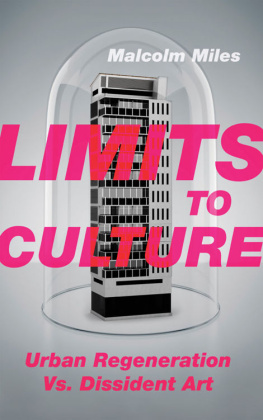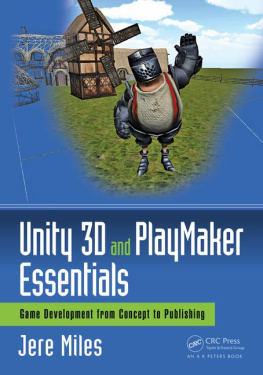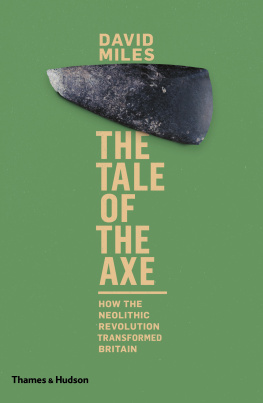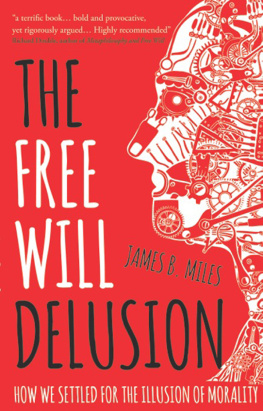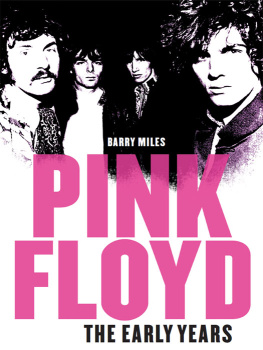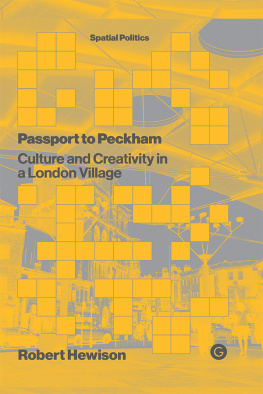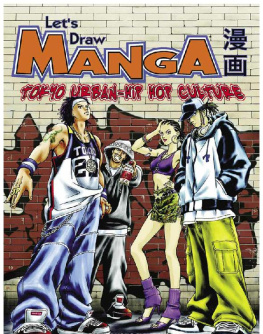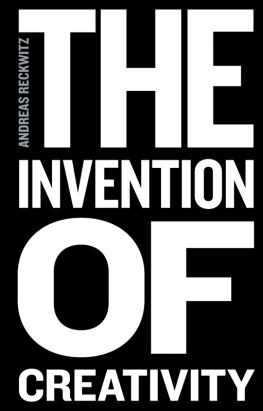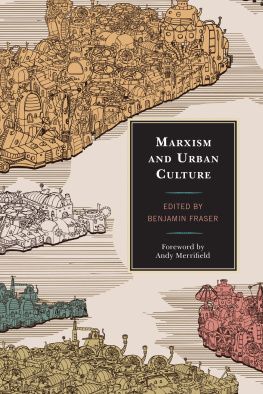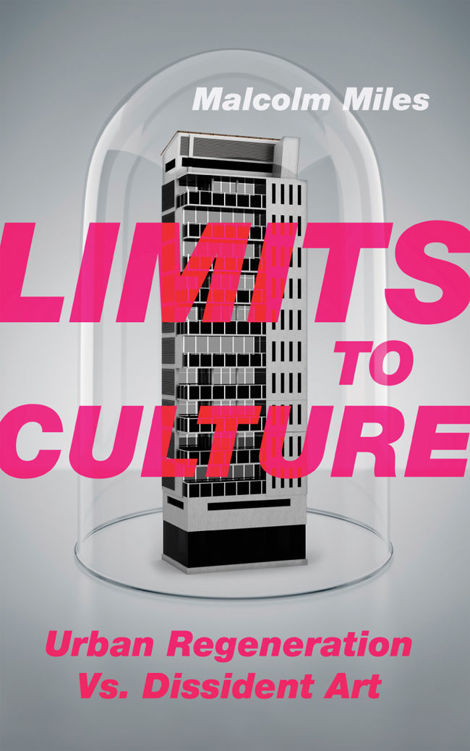Limits to Culture
Limits to Culture
Urban Regeneration vs. Dissident Art
Malcolm Miles

First published 2015 by Pluto Press
345 Archway Road, London N6 5AA
www.plutobooks.com
Copyright Malcolm Miles 2015
The right of Malcolm Miles to be identified as the author of this work has been asserted by him in accordance with the Copyright, Designs and Patents Act 1988.
British Library Cataloguing in Publication Data
A catalogue record for this book is available from the British Library
ISBN 978 0 7453 3435 6 Hardback
ISBN 978 0 7453 3434 9 Paperback
ISBN 978 1 7837 1308 0 PDF eBook
ISBN 978 1 7837 1310 3 Kindle eBook
ISBN 978 1 7837 1309 7 EPUB eBook
This book is printed on paper suitable for recycling and made from fully managed and sustained forest sources. Logging, pulping and manufacturing processes are expected to conform to the environmental standards of the country of origin.
10 9 8 7 6 5 4 3 2 1
Typeset by Stanford DTP Services, Northampton, England
Text design by Melanie Patrick
Simultaneously printed by CPI Antony Rowe, Chippenham, UK and Edwards Bros in the United States of America
Contents
List of Illustrations
All images are the authors unless otherwise stated
Introduction
This is a book about how culture has become a mask of social ordering under neoliberalism, and about some of the dissenting practices that have emerged in the past few years against that trend or as alternatives to it.
Despite claims to the contrary, culturally led urban redevelopment does not bring the social or economic regeneration of communities, and is not a means to social inclusion so much as a relatively low-cost way to address failures in other policy areas. New art museums are said to generate employment and attract cultural tourism or investment, and a few spectacular cases Barcelona and Bilbao are quoted; but conditions differ from one place to another, so that a model is unlikely to be replicated (while the benefits are disputed in supposedly successful cases). I have nothing against public investment in cultural resources, which is preferable to spending on military adventures, bailing out private-sector banks, or building new roads; but I ask more from spending on the arts than support for property redevelopment, and am not persuaded that the arts drive urban renewal (in the sense of regenerating local economies and communities). In some cases there might be benefits but these tend to be unevenly distributed and often the impact is gentrification. Anyway, the game is up.
After the 200708 crisis in global financial services, and austerity, money for the arts has decreased while governments have become out-sourced providers of governmental services to transnational corporations. If the project of capital is the total containment of all elements of life in profit mechanisms, culture is part of its soft policing. If that seems bleak or cynical, cultures co-option to the regime of globalisation follows its function in liberal improvement in the nineteenth century, when new art museums opened access to high culture to the lower classes as a means to greater productivity and social stability. In the past few decades, public art, cultural quarters and flagship cultural institutions have become further means of ordering, now in service of property development.
In brief, culture has been co-opted to redevelopment in service, not of local needs, but of the symbolic economies by which cities compete globally. Within the new, immaterial economy, art fits well enough with rebranding. In London in the 2000s, the Millennium Dome and Tate Modern were flagships of the rebranding of Britain as Cool Britannia, although contrasting in their capacity to deliver the smoke-and-mirrors effect. Since the crash, what has emerged as a distinct redevelopment sector has allowed the cultural mask to slip; schemes are overtly seen as urban clearances designed to move the poor and unproductive to the geographical as well as the social and economic margins. In place of inner cities, now, urban villages cater for the dwelling and consumption needs of young professionals in the new economy, defined, in one rather dubious analysis, as a creative class.
A number of tendencies and trajectories merge, collide or slip into entropy. The civic values which were a modern outcome of nineteenth-century liberal reformism gave way in the 1980s to managerialism, which transmuted into an imperative to consume, and a totalitarian denial of alternatives. Against this, dissident art has a role of resisting the erasure of the alternative imaginaries which might one day be realised as a better world. The work of art collectives is discussed in the books later chapters, and gives me hope for change of some kind, although real political change (at least through representational systems) is unlikely at present.
Occupy showed, in the winter of 201112, that direct democracy is possible if ephemeral. If another kind of politics has emerged then there might at some point be another kind of cultural work as antidote to affirmative culture and the affluent society. Nonetheless, the book ends on an ambivalent note, reflecting on an incidental occurrence outside art, but no less cultural. Well, I do not work in the Answers Department at the university: my job is more reframing the questions.
Two sources
The title, Limits to Culture, echoes Limits to Medicine by Ivan Illich. With Herbert Marcuse and Andr Gorz, Illich was a contributor to the radical Left in the 1960s and 1970s, looking beyond the affluent society towards a liberation of consciousness. In De-schooling Society,
I want to juxtapose Illichs writing from the era of protest and intentional communities with Peter Sloterdijks In the World Interior of Capital. If Marcuse and Illich pointed to a new totalitarianism of capital which was as oppressive as the totalitarianism of the Soviet Union, I think Sloterdijk deepens the argument historically by locating the beginning of globalisation literally in the invention of the globe and the voyages of colonisation of the late fifteenth and early sixteenth centuries. Hence a universal system enabled the total sight of the world, but the story does not end with an all-seeing gaze; it leads to a total economic system, or globalised capitalism, which assimilates every human and natural phenomenon. That is, what began as a quest for exploitation has become a total imperative to consume, and to do so in ways which entrench the underlying value-system. Sloterdijk writes,
As for capitalism, we can only now say that it always meant more than the relations of production; its shaping power had always gone much further than can be encapsulated in the thought figure of the global market. It implies the project of placing the entire working life, wish life, and expressive life of the people it affected within the immanence of spending power.
The implication here is that cities are (re)produced by this mechanism. A specific outcome is, I argue, the co-option of culture and urban spaces to the trajectory of capital. The end of that trajectory is wealth accumulation by an elite whose power is political-economic, as the state declines as fabled protector of the common wealth (or well-being). Culture, in the form of culturally led urban redevelopment, lends an aura of universal benefit to the property market, and recodes space as elite zones producing new margins outside them.

